It must be immediately apparent that here in this Canto XXVIII we have a parallel wood that presages a new stage in Dante the Pilgrim’s journey toward wholeness and holiness. The first wood, of course was in the very first Canto of the Commedia. He was lost in the dark wood and his way out was barred by three fierce animals. Here however he is not in a rush, and indeed, is casually confident. Unlike the last few levels of Mt. Purgatory, there is no need to hurry here. There is a lovely contrast between his inner eagerness with his casual walk. Yes, he is eager to move forward, but does so at a measured pace: slowly, slowly [lento, lento].
4 I left the bank without delay
sanza più aspettar, lasciai la riva,
5 and wandered oh so slowly through the countryside
prendendo la campagna lento lento,
Here in this wood as in the first wood at the beginning of Inferno, we find it is also verdant and ancient and it shades the sun. Indeed, after but a few steps into this wood, he can’t even see where he had entered.
22 Already my slow steps had carried me
Già m'avean trasportato i lenti passi
23 so deep into the ancient forest
dentro a la selva antica tanto, ch'io
24 I could not see where I had entered,
non potea rivedere ond' io mi 'ntrassi;
But here there is no confusion, no fear, no threat either from within or without. He has been proclaimed by Virgil as master of himself and indeed one has the sense that what is different is not the wood or the location, but rather the Pilgrim himself. Take a person who is untrue to him or herself, who is running from threats within along with dishonesty and lack of integrity, and place that person anywhere on this green earth and the reality may indeed seem threatening and frightening, regardless of the context.
We are in different territory here, for in the first wood Dante the Pilgrim’s way was barred by three beasts, here however, he is stopped in his tracks by a lovely lady collecting flowers and singing. She is on the other side of a stream and Dante is thunderstruck by her beauty and presence [“a thing so marvelous it drives away all other thoughts”].
37 and there appeared to me, as suddenly appears
e là m'apparve, sì com' elli appare
38 a thing so marvelous
subitamente cosa che disvia
39 it drives away all other thoughts,
per maraviglia tutto altro pensare,
40 a lady, who went her way alone, singing
una donna soletta che si gia
41 and picking flowers from among the blossoms
e cantando e scegliendo fior da fiore
42 that were painted all along her way.
ond' era pinta tutta la sua via.
Old habits die hard. He has just come from the level of the lustful, being purged in the fire himself, and yet he is so struck by her beauty here in this pastoral scene he immediately draws comparisons from classical poetry to rape and seduction. The three similes can be found in your translation and commentaries, but they are; Prosperina/Pluto [rape], Venus/Adonis [Cupid’s arrow], Hero/Leander [consummation of lust]. Dante the Pilgrim has the temerity to tell this woman some of what he is thinking.
Yet, here we have a woman of wondrous strength and delicate tact who leads his thoughts to the proper meditations for this stage in his journey. She is not insulted or threatened but simply states a fact: “You are new here… You are perplexed and filled with wonder…” She gives him the benefit of the doubt and lets Dante the Pilgrim know she is singing Psalm 92. “It is good to praise the Lord and make music to your name, O Most High, proclaiming your love in the morning and your faithfulness at night,” It is a psalm of a life lived in the joy of praising God in all that one does. Indeed, all that she has been doing, singing, picking flowers, sauntering and waiting, has been honoring God.
By that one word she realigns Dante the Pilgrim’s expectations and brings him round right. She tells him that she has come to this wood specifically to answer his questions. And he immediately knows this woman is to be honored, respected and listened to. We will learn that this is Matelda, and she will lead him, even drag him, to the place needed, spiritually and in actual location in the earthly paradise, for Beatrice to arrive and guide him further. She is one of my favorite characters in the entire Commedia.
While Matelda lectures Dante the Pilgrim about the movement of the spheres and the weather that results, I wish to look just briefly at the river that is before his feet and the other river that is to come, which we will learn is on the other side of Eden. Dante the Poet has created his own geography here, foregoing the traditional four rivers known to classical antiquity or ancient Biblical geography, reducing everything down to two rivers which aid in the process of redemption of sin and restoration of Grace.
The river in front of Dante is Lethe which would be known to all as the classical river of forgetfulness used by Virgil and Ovid. In their worldview, a soul would drink of the waters of Lethe to wipe clean all memories of a past life and prepare the soul for a new life to come. Dante reconfigures its effects so that when a soul drinks from it in this earthly Eden, it “has the power to take from men the memory of sin.” At first blush, that sounds like a total blessing to me. There are still sins that haunt us, coming back to shame or revile us years after the original deed had been done. Would that we could bite our tongue off rather than have said those things to our loved one. Does this sound familiar to anyone else? Drink of Lethe and forget all, all, ALL OF THAT!
Yet, no. That is just the first step of a two-step process. Dante the Pilgrim must also drink of the water from the river on the other side of Eden: Eunoe. This is most likely another neologism of Dante the Poet meaning ‘good mind.’ When one drinks of this water, the past sins are once again brought to mind, but as fully forgiven. Hence, healing is complete. Past mistakes and betrayals now become “felix culpa,” the “Blessed Fall” which led to our Redemption. Originally applied to Adam’s sin, it is seen in spiritual formation and Jungian therapy and 12 step programs as the admission of guilt for the sake of forgiveness and healing. It is a recognizing of the darkness within us all that will lead to end of fault-finding and blaming. For Dante to have created both rivers that need to be drunk from in the correct order which will lead to wholeness and holiness, is a work of great art, deep theological truth and practical lived reality of forgiveness desired and given.
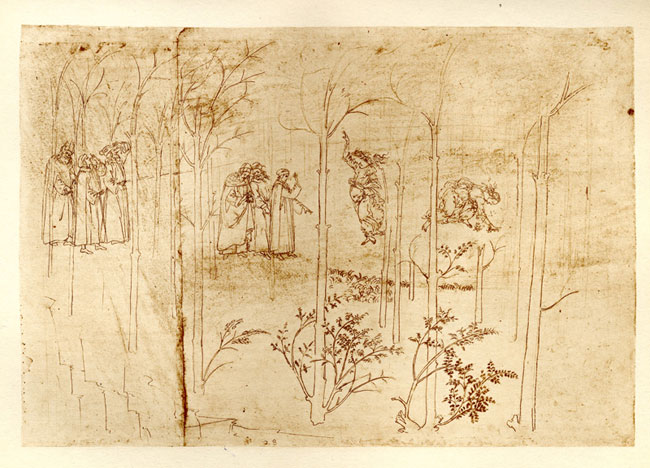
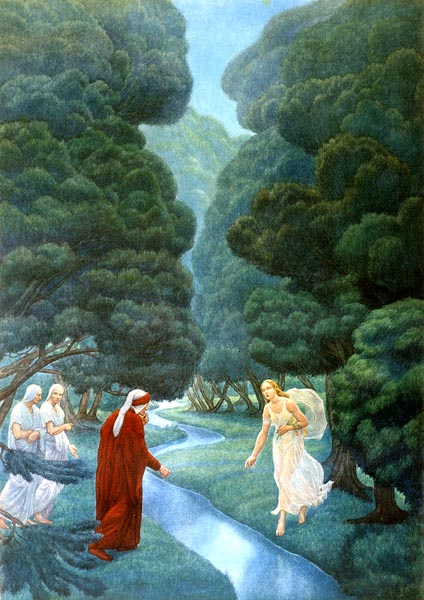
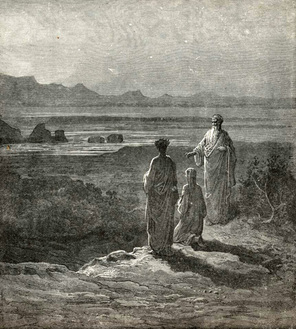
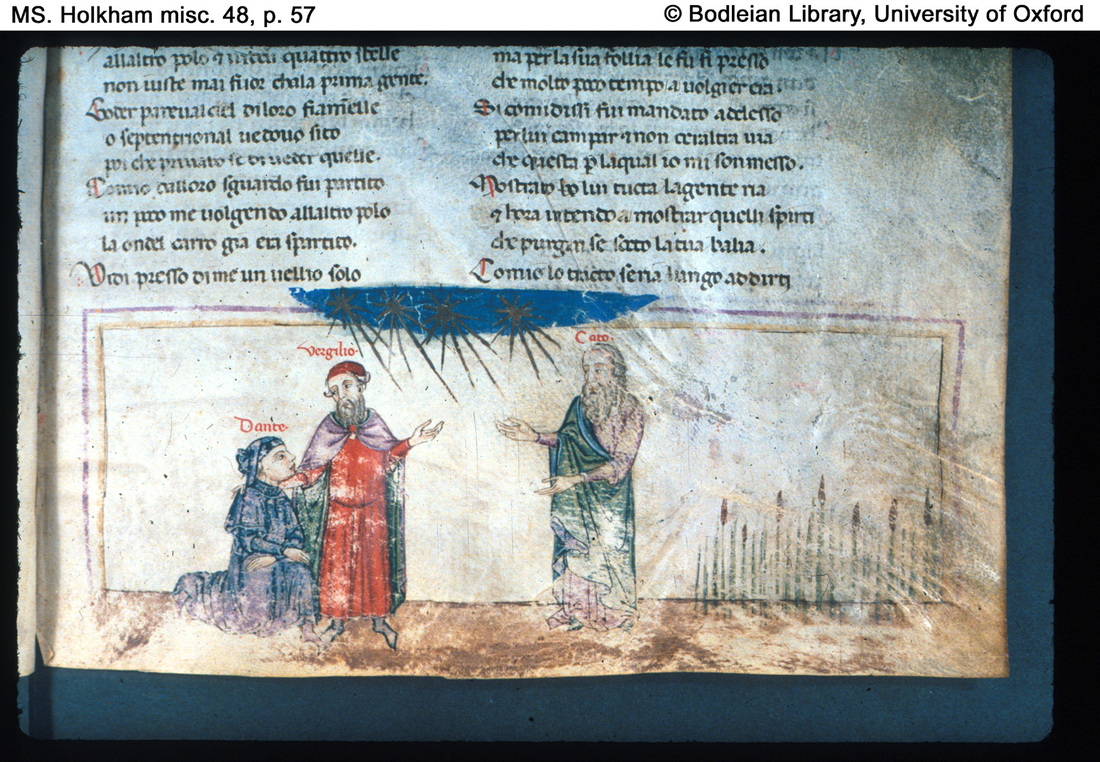
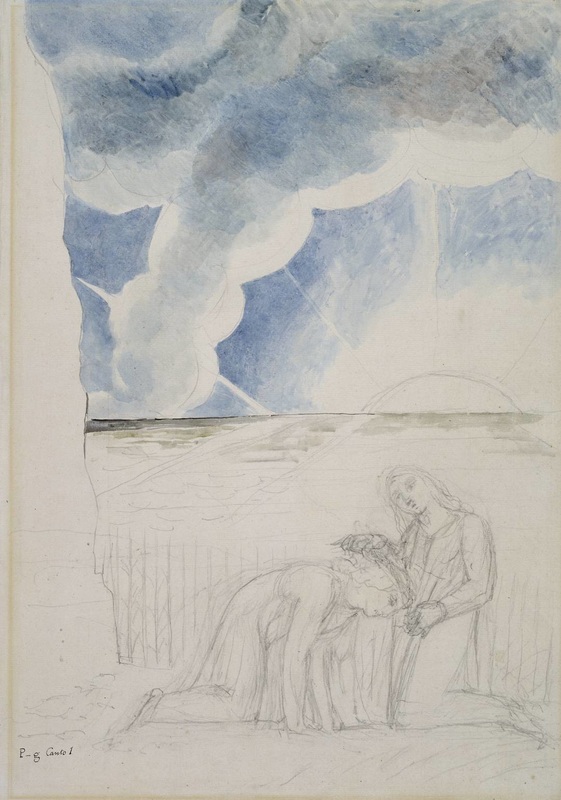
 RSS Feed
RSS Feed
